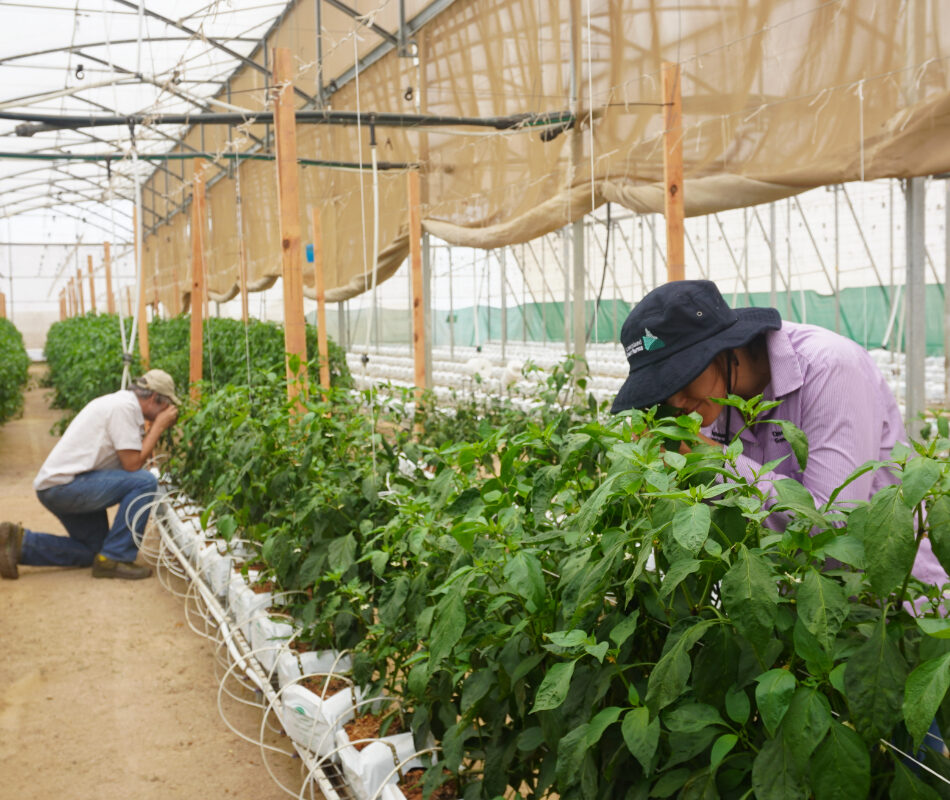A new Cooperative Research Centre for Developing Northern Australia (CRCNA) collaboration is set to supercharge the north’s horticultural industry – by encouraging more producers to invest in protected cropping systems.
The two-year $443,000 project is an R&D partnership between producers in North Queensland, Carnarvon (WA) and Lake Bennett (NT), industry stakeholders the Carnarvon Growers’ Association, Northern Territory Farmers’ Association (NT Farmers), Cravo Australia, and the Port of Townsville, and the Queensland Department of Agriculture and Fisheries (DAF) and Western Australian Department of Primary Industries and Regional Development (WA DPIRD).
The project team will examine the various protected cropping systems, technologies and practices and work with producers to develop a roadmap of how they can implement the right system for them.
Project leader, Dr Elio Jovicich (DAF) said having more information will support growers in their business and investment planning and help them tap into high-value, premium markets and secure higher returns.
“Depending on the crop species and protected cropping technology, yields per square meter have shown to be four to 10 times or even greater than in field-grown crops.
“However, it’s essential to understand crops harvested in most protected cropping scenarios will be different from those grown outdoors, even if we are talking about the same vegetable crop species. Under structures, the fruit type and visual and eating quality will be different and target specific markets where they can attract higher prices,” he said.
WA DPIRD’s Assistant Director of Horticulture, Rohan Prince, said growing in a protected environment gives producers more control over temperature, water, pest and disease management.
“It also means they can grow high-value products for longer, potentially opening up new domestic and international market opportunities.
“We hope our work will bust some of the myths around protected cropping in northern Australia and give growers and their financiers’ confidence to invest in PC structures for horticultural production,” he said.
CRCNA CEO Jed Matz said protected cropping industry is one of the fastest-growing food-producing sectors in Australia, with an estimated value of around $1.8 billion per annum.
“With the increasing consumer demand for access to fresh, high quality produce year-round,it makes sense for northern Australian producers to learn more about what they need to do to capture their share of this opportunity,” he said.
Maria James Port of Townsville’s manager of trade and business development says the initial evaluations of simulated sea freight transport of specialty melons grown under protected cropping by DAF is just one example of the many opportunities to export differentiated high-value commodities to Asia from north Queensland.
“Developing a situation analysis of vegetable export supply chains in north Queensland will build on these initial evaluations and help inform ways that northern Australia’s export value chains can be strengthened,” she said.
The project team expect to deliver a suite of information materials and guidelines for adopting protected cropping in tropical environments to the industry when their final report is delivered in 2021.
Media enquiries
Carla Keith , CRCNA Communications Manager 0499 330 051
Dr Elio Jovicich, DAF Lead researcher 0488 770 925


